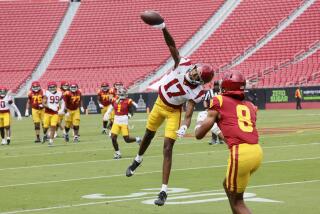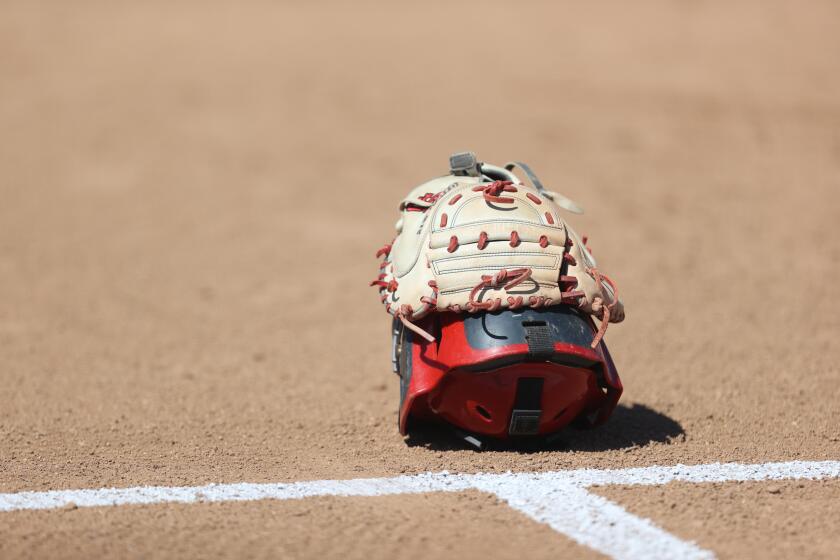Ask Sam Farmer: Why do some players excel in college but not in the NFL?
Have a question about the NFL? Ask Times NFL writer Sam Farmer, and he will answer as many as he can online and in the Sunday editions of the newspaper throughout the season. Email questions to: sam.farmer@latimes.com
Why do some players excel in college ball but not translate to pro ball? Is it the game itself, particular pro offense/defense, or something else?
Tom King, Kennelon, N.J.
Farmer: For this, I turned to former UCLA coach Rick Neuheisel, also formerly the offensive coordinator for the Baltimore Ravens.
There’s no one-size-fits-all answer to this question because there are so many variables. But there are common threads in many situations.
“The pro game’s faster, so sometimes it’s speed,” Neuheisel said. “Sometimes it’s the ability to recognize and anticipate, whether it’s quarterbacks or defenses. And sometimes it’s just physical skill.”
Conversely, there are frequently instances of players who didn’t particularly stand out in college, yet found their groove in the NFL. For instance, Tom Brady platooned with Drew Henson for the first seven games of his final season at Michigan, with Brady playing the first quarter, Henson playing the second, and Coach Lloyd Carr deciding at halftime who would play the second half.
“Sometimes in college, you see players whose anticipation skills and instinctual skills are not being used, like, for instance, an Odell Beckham or Jarvis Landry,” Neuheisel said, referring to the New York Giants and Miami receivers, both former Louisiana State players.
“Odell Beckham had 59 catches in his last year at LSU. They just couldn’t utilize what they had there, because they were more running an offense than highlighting individual skills and taking advantage of matchups.”
::
How often can a team ask for a first-down measurement in the NFL?
Eric Ferguson, Berlin, Conn.
Farmer: According to an NFL spokesman, officials will grant the request for a measurement if the spot looks like a close call and it’s going to be third or fourth down — unless it’s a hurry-up situation and stopping the clock would give a team an advantage. Officials do not measure on first or second down, or when it’s obvious the spot is short of a first down.
Follow Sam Farmer on Twitter @LATimesfarmer
More to Read
Get our high school sports newsletter
Prep Rally is devoted to the SoCal high school sports experience, bringing you scores, stories and a behind-the-scenes look at what makes prep sports so popular.
You may occasionally receive promotional content from the Los Angeles Times.







